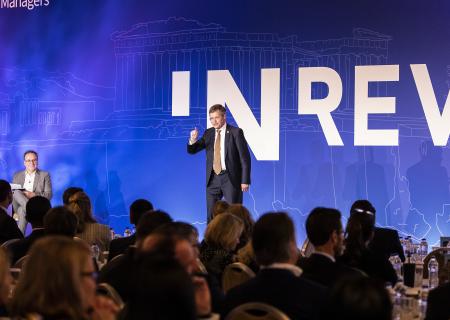Examining investor interest for Europe over the next 6-12 months
A continued belief in long-term value, with a cautious pace of investments
Over 2021, INREV reported at least €254 billion of capital was raised for non-listed real estate globally, a new-record high since the beginning of the global Capital Raising Survey in 2015. The majority of capital was raised for North American (€90 billion) and European (€73 billion) strategies, followed by global (€56 billion) and Asia-Pacific strategies (€34 billion) and a small category of other.
However, these results were collected just before March 2022. Since then, Europe has experienced a shock with the start of the war in Ukraine. The rest of the world has been impacted too. Derailed supply chains, increasing consumer prices, and rising interest rates have become very disruptive economically. From a political view, increased tension between nations is being driven by choices to either align behind Ukraine or Russia or stay silent on the conflict.
With Europe attracting the second largest amount of new capital amongst other regional strategies according to the ANREV/INREV/NCREIF Capital Raising report, it is natural to ask: ‘How will capital flows be impacted?’
To test the waters, in May 2022 Hodes Weill & Associates conducted an Investor Pulse amongst our closest institutional investor relationships in Europe. By asking four short questions about their investment appetite for Europe in the next 6-12 months, combined with in-depth conversations with multiple institutional investors, we gauged the ongoing attractiveness of Europe for investments.
With Europe attracting the second largest amount of new capital amongst other regional strategies according to the ANREV/INREV/NCREIF Capital Raising report, it is natural to ask: ‘How will capital flows be impacted?
From the data, we derived four key take-aways for capital raising in Europe over the next 6-12 months:
- Investors are cautious to invest into Europe in the next 6-12 months, keeping a close eye on economic and geopolitical developments. This may lead to longer capital deployment periods.
- However, in the next 6-12 months, investors are not likely to change their long-term view for Europe. The main drivers for long-term investments, population growth and economic development, will continue to move investors towards residential and logistics.
- Investing in Europe over the next 6-12 months comes with challenges related to ESG, legislation, economic and political complexities. Investors are seeking high-quality specialist managers and advisors, who are well positioned to navigate these complexities – which INREV's Investment-Intentions-Survey-2022 report also identified as the main reason behind investing in European non-listed real estate funds.
- Institutional investors are moving up the risk curve to value-add and/or development strategies to meet returns requirements, as they expect returns from Europe may be lower and lead times may be longer for high-quality existing stock in the next 6-12 months.
Concluding, the attractiveness of Europe is affected in the short-term by the major economic and political disruption of the last quarter. This is being expressed with a more cautious investment approach for Europe in the short term. Longer-term, investors remain attracted to the region, seeking specialists for higher yielding investment opportunities underpinned by long-term demographic and economic drivers.
Barbara Maltha, Principal at Hodes Weill.









